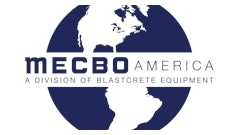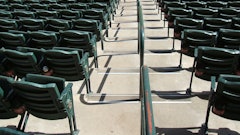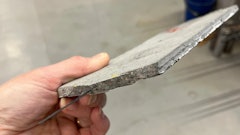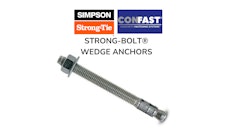
Temperatures can soar to triple digits with humidity to match in the often brutal Southern Louisiana summer.
Those sweltering conditions may have been a factor in the unevenness of the concrete floor at the Kinder-Morgan shipping terminal in Southern Louisiana. How bad was it?
"It was the worst slab I have ever had to fix," says Jim Sander. Jim is president of Jim Sander Company, which specializes in concrete surface preparation. The shipping company called on Jim and his crew to fix 70,000 square feet of wavy slab.
"Here's how uneven the slab was," Jim said. "The company tested the floor's levelness by driving a forklift over it at 6 mph. The forks held a pallet with a 55-gallon drum riding on it.
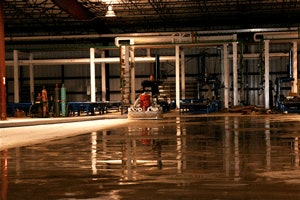
Jim doesn't fault the floor's installers, who poured the floor in summer 2008.
"Even the best concrete professionals will struggle in that kind of heat and humidity," he said. "I would."
Nevertheless, the floor needed fixing. Kinder-Morgan and the concrete contractor had a solution: demo and reinstall the full 167,000 square foot slab at a price tag of $2 million. But then someone had another idea: maybe the slab could be ground flat. Only 70,000 square feet needed fixing. That’s because the rest was covered with equipment and shelving that no forklift would have to drive over.
The first attempt at grinding didn't work.
The 950-pound grinders buzzed across the floor, making it prettier, but no flatter.
So Stan Strenhler, an engineer with Kinder-Morgan, researched concrete grinding and found JimSanderCompany.com. Website photos and a phone conversation with Jim convinced Stan to bring Jim out to see the slab for himself.
One look at "the worst slab I have ever had to fix," and Jim knew it would take every bit of power and weight he could bring to bear.
Within a week, Jim had a spec for the company — a spec they followed.
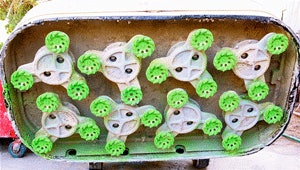
The men got to work immediately. Their 50-horsepower, computer-controlled, self-driven machines each cut a 54-inch swath through the concrete humps and trowel marks — some of which were up to an inch above level.
The irresistible weight of each machine bearing down on 24 swirling, aggressive diamonds flattened the wavy surface without argument. At 90 degrees, then at 45 degrees, then at 90 again, the men and machines cut their way across the slab. They worked 10-hour days, not even stopping for Thanksgiving.
In eight days the floor was flat. In all, the crew turned 10 square yards of uneven concrete to dust and vacuumed it away.
Then, they spent one day grinding with 50- and 100-grit resins to feather, blend and clean the surface, and take out some of the scratch marks.
On their 9th and last day, the crew dust-proofed the floor.
The concrete was soft, Jim explained, which meant that it would dust quickly and easily. Soft calcium hydroxide in the concrete mixes with carbon dioxide in the air, creating calcium carbonate – also known as chalk dust.
The soft, dusty floors make more dust, as traffic abrades the edges of microscopic concrete pores. You sweep, you wash, but you can’t get rid of it.
The dust covers everything. It gets in everything.
That fate was not to be for the newly leveled Kinder-Morgan floor. To prevent it, the Jim Sander Company crew hardened and densified the concrete with PROSOCO's Consolideck® LS (Lithium-Silicate) hardener-densifier.
As one man slowly drove a forklift with a pallet holding a 55-gallon drum of LS, a pump and a generator, another man sprayed the LS. A third man followed spreading the LS with a push-broom.
The lithium-silicate hardener-densifier hardened the floor by converting the soft calcium hydroxide to hard, durable calcium silicate hydrate. It densified the floor by filling pores with the tough calcium silicate hydrate.
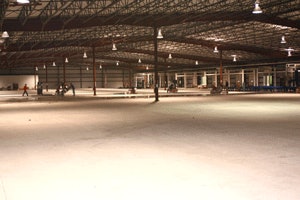
It took the three-man crew six hours to fully treat the 70,000 square feet. Within an hour, the last portions of the floor were ready to take on traffic, spills, scrapes and the endless impacts industrial floors are heir to.
"I chose LS for the same reason I brought my biggest machines," Jim said. "I wanted the best results and I wanted them fast."
Ten days after arrival, Jim presented his client with the hard, flat, dust-proof floor Kinder-Morgan shipping operations need. In return, they gave Jim what he considers to be the ultimate compliment.
"They lined us up for another job," he said.
For more info, e-mail Gary Henry at [email protected]




